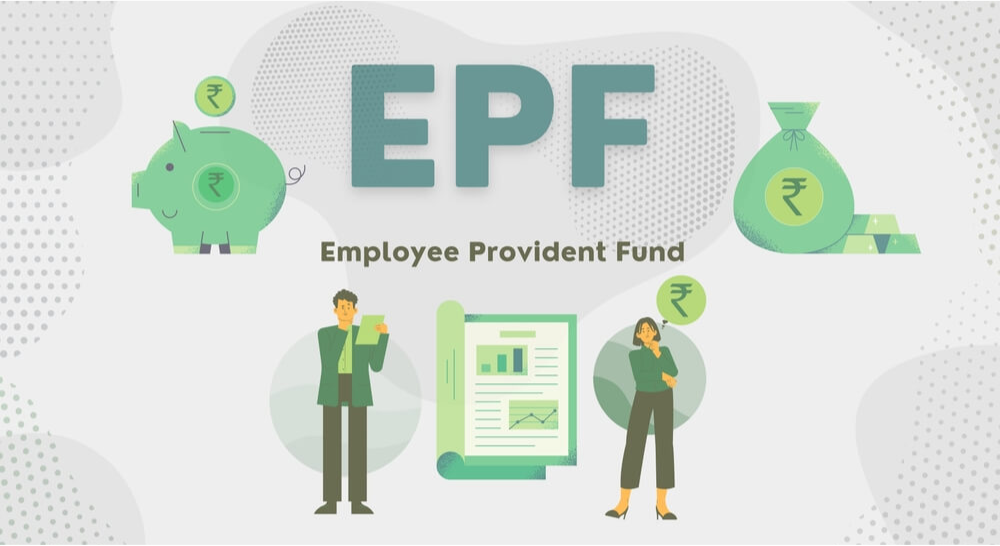 Last updated: August 22nd, 2024 3:18 PM
Last updated: August 22nd, 2024 3:18 PM
Long Term Capital Gains Tax (LTCG): Meaning, Calculation, Tax Rates, & Exemptions
Long Term Capital Gains Tax (LTCG) is a critical aspect of income tax that applies to profits arising from the transfer of capital assets such as property, shares, bonds, and vehicles. These assets are classified as short-term or long-term based on their holding period, with long-term capital gains specifically referring to profits from assets held over an extended period, typically more than one year. Before the Union Budget 2024, long-term capital gains on equity mutual funds and shares exceeding Rs. 1 lakh in a financial year were taxed at a rate of 10%, along with applicable surcharges and cess. However, recent changes announced by the Finance Minister have increased the LTCG tax rate for equity-linked assets while reducing it for other assets.Budget 2024 Updates on Long Term Capital Gains
- Unified Tax Rate: All long-term capital gains, whether from financial or non-financial assets, will now be taxed at a flat rate of 12.5%.
- Increased Exemption Limit: To provide relief to lower and middle-income earners, the exemption limit for capital gains on certain listed financial assets has been raised from ₹1 lakh to ₹1.25 lakh per year.
- Holding Period:
- Listed Financial Assets: Held for more than a year will be considered long-term.
- Unlisted Financial Assets and All Non-Financial Assets: Must be held for at least two years to qualify as long-term.
- Unlisted Bonds and Debentures: Regardless of holding period, capital gains from unlisted bonds, debentures, debt mutual funds, and market-linked debentures will be taxed at applicable rates.
What is a Long Term Capital Gains (LTCG)?
Long Term Capital Gains (LTCG) refer to the profits earned from the sale of a capital asset that has been held for more than a specified period, typically over one year. These gains are subject to lower tax rates compared to short-term capital gains, making them an attractive option for investors. The LTCG tax rate varies depending on the asset type, with common categories including real estate, stocks, mutual funds, and bonds. For instance, in the case of equity-oriented mutual funds and stocks, the LTCG tax rate is often 10% for gains exceeding a specified threshold. Understanding LTCG is crucial for effective tax planning and maximizing investment returns, especially for long-term investors looking to optimize their portfolios. Learn about Capital Gains Tax in detailWhat is the Long Term Capital Tax Rate (LTCG Tax Rate)?
Long-Term Capital Gains (LTCG) refer to the profit made from the sale of assets held for a specified period. In India, the tax rate on LTCG varies depending on the type of asset and the date of transfer. LTCG Tax Rates for Different Assets,- Listed Equity Shares and Equity-Oriented Mutual Funds:
- Transfers made on or after 23rd July 2024: LTCG exceeding ₹1.25 lakh in a financial year is taxed at a 12.5% rate.
- Transfers made up to 22nd July 2024: LTCG is taxed at a 10% rate.
- Other Assets (Real Estate, Land, Unlisted Shares, etc.):
- Transfers made on or after 23rd July 2024:
- Except for land and buildings, LTCG is taxed at 12.5% without indexation benefits.
- Land and building: Taxpayers have the option to pay tax at 12.5% without indexation or 20% with indexation benefits.
- Transfers made on or before 22nd July 2024: LTCG is taxed at 20% after taking indexation benefits.
Long-term Capital Gain Tax on Property
A long-term capital gain arises when a property held for more than 24 months is sold. The tax rate for such gains has been revised in Budget 2024. For transfers made on or before July 22, 2024, a 20% tax rate applies after indexation benefits. However, for subsequent transfers, the rate is reduced to 12.5% without indexation. To provide additional relief, taxpayers selling land or buildings acquired before July 23, 2024, can choose between these two tax rates: 20% with indexation or 12.5% without indexation.Long-term Capital Gain tax on Shares
A long-term capital gain occurs when shares held for more than a year are sold at a profit. This gain is calculated by subtracting the original purchase price from the selling price. For listed equity shares, a holding period of at least 12 months qualifies for long-term capital gains treatment. However, for unlisted equity shares, the holding period must be at least 24 months to be considered a long-term capital asset.Long-term Capital Gain tax on Mutual Fund
If you hold equity mutual fund units for more than a year and then sell them, you may realize long-term capital gains (LTCG). However, the first ₹1.25 lakh of LTCG from equity mutual funds is exempt from tax. Any gains exceeding this threshold are subject to a flat tax rate of 12.5%. It's important to note that there is no indexation benefit available for LTCG on mutual funds, which means that the gains are taxed on their full value.How to Calculate Long-Term Capital Gains Tax?
To calculate Long Term Capital Gains Tax, use the following steps,- Determine the Full Value of Consideration:
- This is the total amount received from the sale or transfer of the capital asset.
- It includes cash payments, the fair market value of any property received, and other benefits.
- Determine the Net Value of Consideration:
- Subtract any expenses related to the transfer, such as brokerage fees, commissions, and advertising costs.
- Calculate the Cost of Acquisition:
- Identify the original purchase price of the asset.
- For assets eligible for indexation: Adjust the cost of acquisition using the Cost Inflation Index (CII) to account for inflation. The formula for indexed cost of acquisition is:
- Indexed cost of acquisition = Cost of acquisition x (CII of the year of transfer / CII of the year of acquisition)
- Note: Indexation benefits have been removed for transfers made after July 23, 2024.
- Deduct Exemptions (if applicable):
- Certain long-term capital gains may qualify for exemptions under specific conditions, such as reinvestment in residential property or certain other assets. Refer to Sections 54, 54B, 54D, 54EC, and 54F for details.
- Calculate Long-Term Capital Gains Chargeable to Tax:
- Use the following formula: LTCG chargeable to tax = Net sale consideration - (Indexed cost of acquisition + Indexed cost of improvement) - exemptions under Section 54/54B/54D/54EC/54F.
- LTCG = ₹1,00,00,000 - ₹50,00,000 - ₹1,00,000 = ₹49,00,000.
What are the Factors Influencing the Calculation of Long Term Capital Gains?
Long-Term Capital Gains (LTCG) refer to the profit made from the sale of assets held for a specific period. The calculation of LTCG is influenced by several factors, including the type of asset, holding period, Cost Inflation Index (CII), exemption limits, and the date of acquisition and sale.- Type of Asset
- Equity-oriented assets: These include equity mutual funds, listed shares, and ELSS. LTCG on such assets is taxed at 10% on gains exceeding Rs. 1.25 lakh per financial year. Importantly, there is no indexation benefit for equity-oriented assets.
- Non-equity assets: These include debt mutual funds, real estate, and gold. LTCG on non-equity assets is taxed at 12.5% without indexation. However, the indexed cost of acquisition can be used to reduce the taxable gain.
- Holding Period
- Equity-oriented assets: To qualify as long-term, equity-oriented assets must be held for more than one year.
- Non-equity assets: For non-equity assets, the holding period is generally more than three years. A longer holding period can result in a more significant impact of indexation for non-equity assets.
- Cost Inflation Index (CII)
- Non-equity assets: The CII is used to calculate the indexed cost of acquisition. The government releases the CII annually, reflecting inflation rates.
- Equity-oriented assets: Equity assets do not benefit from indexation, leading to potentially higher taxable gains.
- Exemption Limits
- Equity-oriented assets: There is an exemption limit of Rs. 1.25 lakh on LTCG. Gains up to this limit are not taxable.
- Non-equity assets: There is no such exemption limit for non-equity assets. All gains are subject to tax after indexation.
- Date of Acquisition and Sale
- Impact on calculation: The specific dates of acquisition and sale determine the applicable CII for non-equity assets and the holding period for all assets. These factors are crucial for determining whether the asset qualifies for LTCG treatment and for calculating the indexed cost or tax-exempt threshold.
- Grandfathering provisions: For equity-oriented assets purchased before 31st January 2018, the higher of the actual purchase price or the market price as on 31st January 2018 is considered for LTCG calculation due to changes in tax laws.
Long Term Capital Gains Exemption
Understanding the exemptions on Long Term Capital Gains (LTCG) tax is crucial for investors aiming to maximize their returns while complying with tax regulations. The Income Tax Act, 1961 provides several exemptions under different sections, allowing investors to reduce or eliminate their LTCG tax liability.- Section 54: This section offers an exemption if the LTCG from the sale of a residential property is reinvested in another residential property within the stipulated time frame. This exemption is particularly beneficial for individuals looking to upgrade or change their primary residence.
- Section 54EC: Investors can claim an exemption on LTCG up to a maximum of Rs. 50 lakhs if the proceeds from the sale of a long-term asset, such as land or building, are invested in specified bonds within six months of the sale. These bonds, typically issued by the National Highways Authority of India (NHAI) or the Rural Electrification Corporation (REC), must be held for a minimum period to qualify for the exemption.
- Equity Shares and Mutual Funds: For gains arising from the sale of equity shares or units of equity-oriented mutual funds, there is an exemption for gains up to Rs. 1.25 lakh in a fiscal year, applicable to sales made on or after April 1, 2018. However, any gains exceeding Rs. 1.25 lakh are subject to a 12.5% tax.
Conclusion
In conclusion, Long Term Capital Gains (LTCG) play a pivotal role in the financial landscape, impacting investors across various asset classes, including property, shares, bonds, and mutual funds. Understanding the nuances of LTCG, from its calculation and applicable tax rates to the recent changes introduced in the Union Budget 2024, is essential for effective tax planning and investment strategy. The introduction of a unified tax rate, increased exemption limits, and specific conditions for different asset types underscore the importance of staying informed about tax regulations.Popular Post

In the digital age, the convenience of accessing important documents online has become a necessity...

The Atalji Janasnehi Kendra Project that has been launched by the Government of Karnataka...

The Indian Divorce Act governs divorce among the Christian couples in India. Divorce...

When an individual has more than a single PAN card, it may lead to that person being heavily penalised, or worse,...

Employees Provident Fund (PF) is social security and savings scheme for employee in India. Employers engaged...


